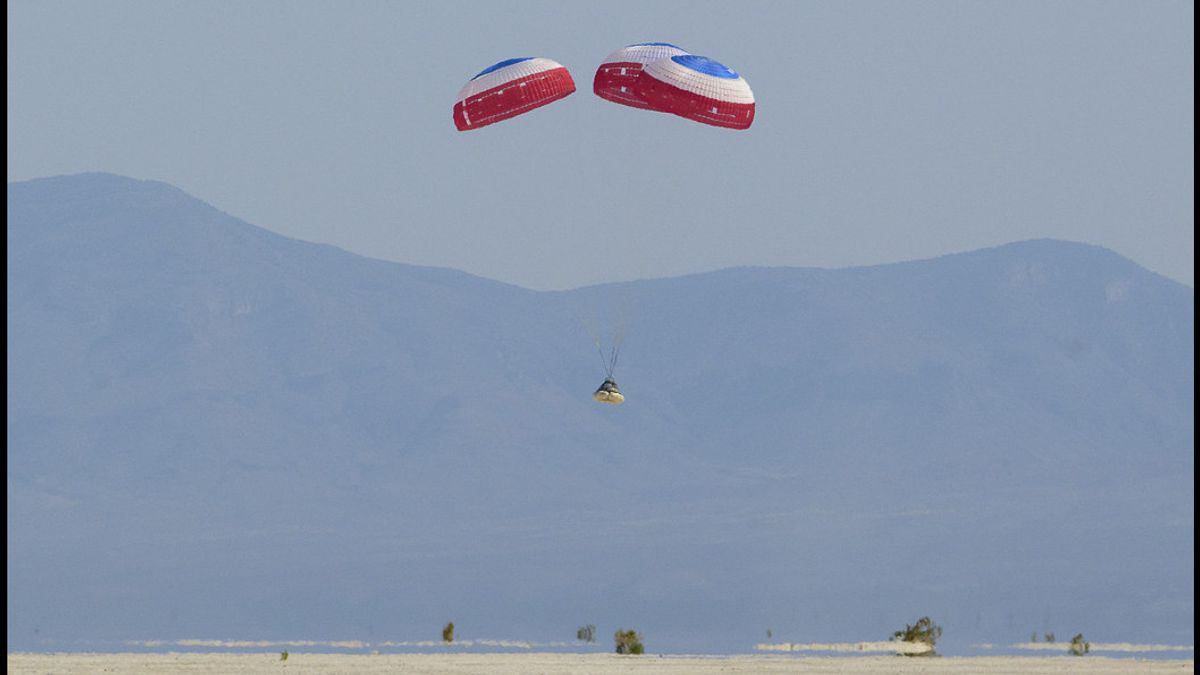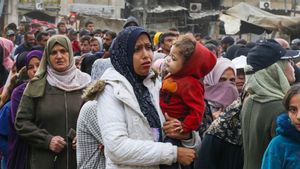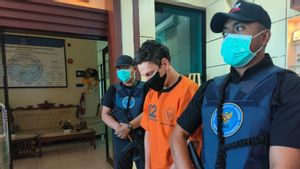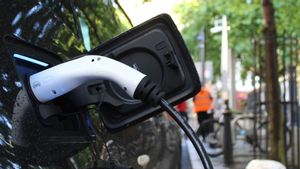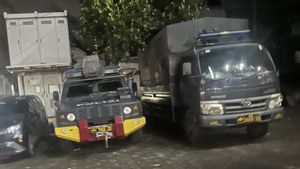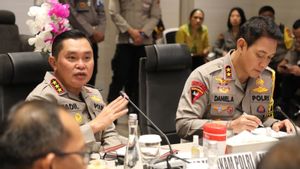JAKARTA - The Starliner astronaut capsule from Boeing Co returned from the International Space Station and landed in New Mexico on Wednesday, May 25. This mission concludes a high-stakes test flight as NASA's next vehicle to take humans into orbit.
Less than a week after its launch from US Space Force Base Cape Canaveral in Florida, the Starliner capsule CST-100 plunged through Earth's atmosphere Wednesday night ahead of a parachute-assisted landing over the desert of White Sands Space Harbor, New Mexico. The capsule landed on time at 6:49 pm. EDT (05.49 WIB /Thursday).
The Starliner capsule has made a round trip of about five hours from the space station, an orbital outpost about 250 miles above Earth. It was the final part of a retest flight that Boeing first attempted in 2019, but failed to complete following a software failure.
The latest test mission moves the Starliner, beset by repeated delays and costly engineering setbacks, one step closer to giving NASA a second reliable avenue to transport astronauts to and from the space station.
The Starliner was launched into orbit Thursday May 19 aboard an Atlas V rocket built by the Boeing-Lockheed Martin joint venture United Launch Alliance. The Starliner achieved its ultimate goal, landing on the ISS, although four of the several thrusters on board failed to function along the way.
Touchdown, #Starliner. At 6:49pm ET (22:49 UTC), @BoeingSpace's spacecraft landed at White Sands Space Harbor, New Mexico. Today's return from the @Space_Station marks the end of Orbital Flight Test-2, a demo providing data to help certify it to carry astronauts. pic.twitter.com/FPdo9F8XEJ
— NASA (@NASA) May 25, 2022
Boeing engineers also had to improvise solutions for thermal control defects during the capsule's final approach to the ISS space station.
Since resuming crewed flights into orbit from American soil in 2020, nine years after the shuttle program ended, the US space agency has relied solely on Falcon 9 rockets and the Crew Dragon capsule from billionaire Elon Musk's private company SpaceX.
Previously, the only other option to reach the orbiting laboratory was aboard the Russian Soyuz spacecraft. This is certainly a less attractive alternative at the moment given rising US-Russian tensions over the war in Ukraine.
A lot is at stake for Boeing as the Chicago-based company struggles to emerge from successive crises in its jet aircraft business and aerospace defense unit. The Starliner program alone has cost the company nearly $600 million over the past 2.5 years.
The starliner's ill-fated first orbital test flight in late 2019 nearly ended in the loss of the vehicle following a software glitch that effectively thwarted the spacecraft's ability to reach the space station.
Subsequent problems with the Starliner propulsion system, supplied by Aerojet Rocketdyne, led Boeing to cancel a second attempt to launch the capsule last summer.
The Starliner stayed grounded for another nine months while the two companies debated what caused the fuel valve to close and which company was responsible for fixing it.
The retest mission completed last Wednesday could pave the way for Starliner to fly its first crew of astronauts to the space station sometime next year, pending a redesign of the Starliner's propulsion system valves and resolution of propulsion issues that arose midway through this year's mission.
The ISS, the orbiting outpost, currently houses a crew of three US NASA astronauts, an Italian astronaut from the European Space Agency, and three Russian cosmonauts. While the Starliner was parked at the station, several astronauts climbed into the capsule to analyze the condition of its cabin.
The English, Chinese, Japanese, Arabic, and French versions are automatically generated by the AI. So there may still be inaccuracies in translating, please always see Indonesian as our main language. (system supported by DigitalSiber.id)
